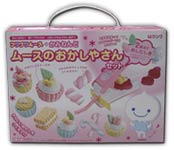I often talk about the various unique aspects of Japanese, in part because I just think languages are cool, but also in the hopes of helping anyone who’s planning on learning Japanese in the future. One early aspect of Japanese grammar that proves challenging for students are the verbs imasu and arimasu, which both mean “to exist [in a place].” The catch is that imasu (“ee-mahs”) is used for animate objects, anything that’s alive ike a person or animal, and arimasu (“ah-ree-mahs”) is for any inanimate object. A good example sentence might be: Watashi wa Tokyo ni imasu ga, ie wa Osaka ni arimasu, which means “I am in Tokyo, but my house is in Osaka.” I remember tormenting my teacher with questions about these verbs, asking which I should use if referring to an android that was indistinguishable from a human, or an undead zombie, or a Venus Fly Trap, as my brain sought to define the boundaries of the new concepts. When I came to Japan I happened to meet a small child who referred to cars driving down the road with imasu instead of the correct arimasu (since they’re not alive, even though they move). I felt a strange kinship with her, since I might have made the same error myself.

Strictly speaking, since Doraemon is a “robot of cat type” is should use arimasu, right?















